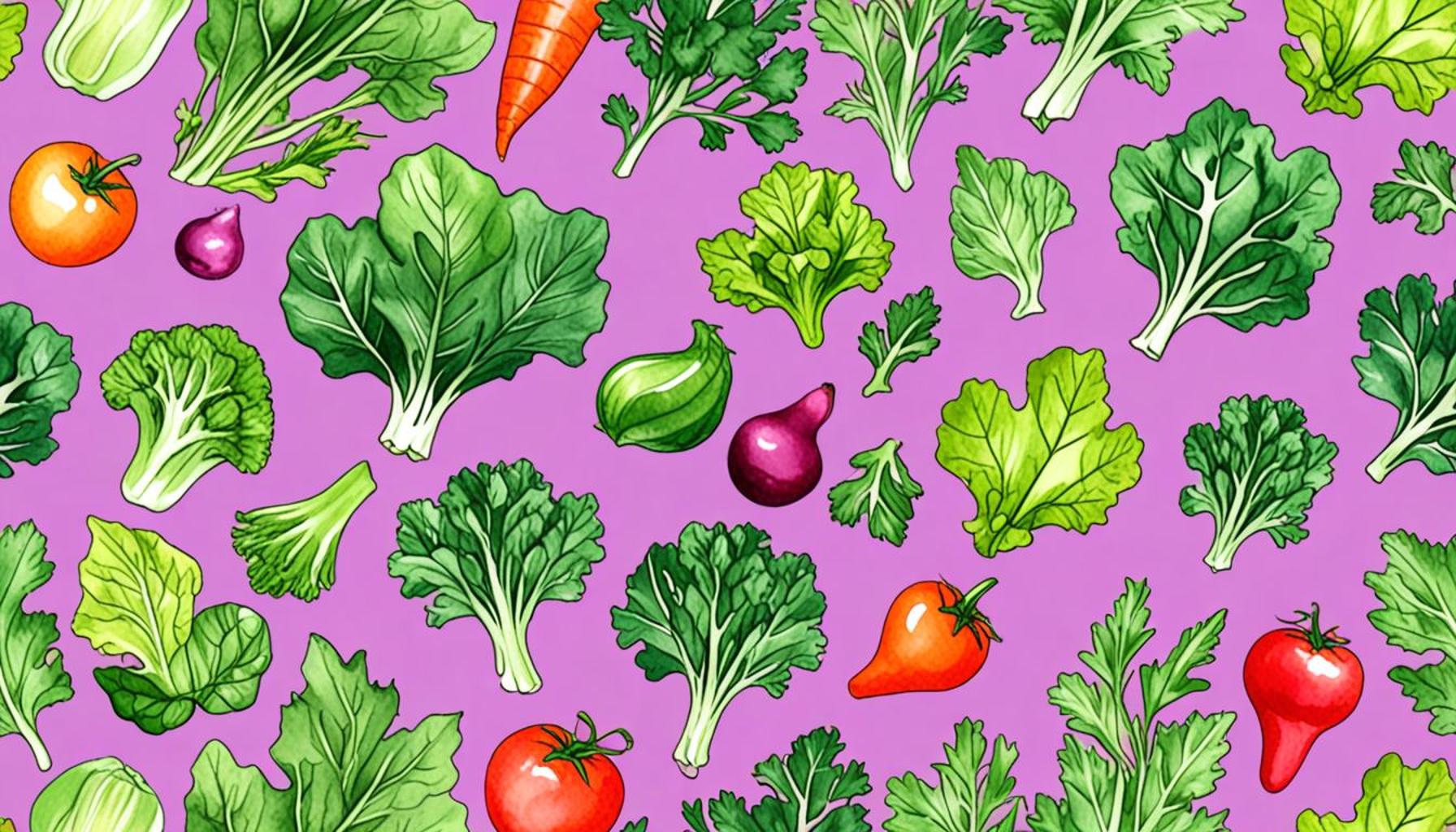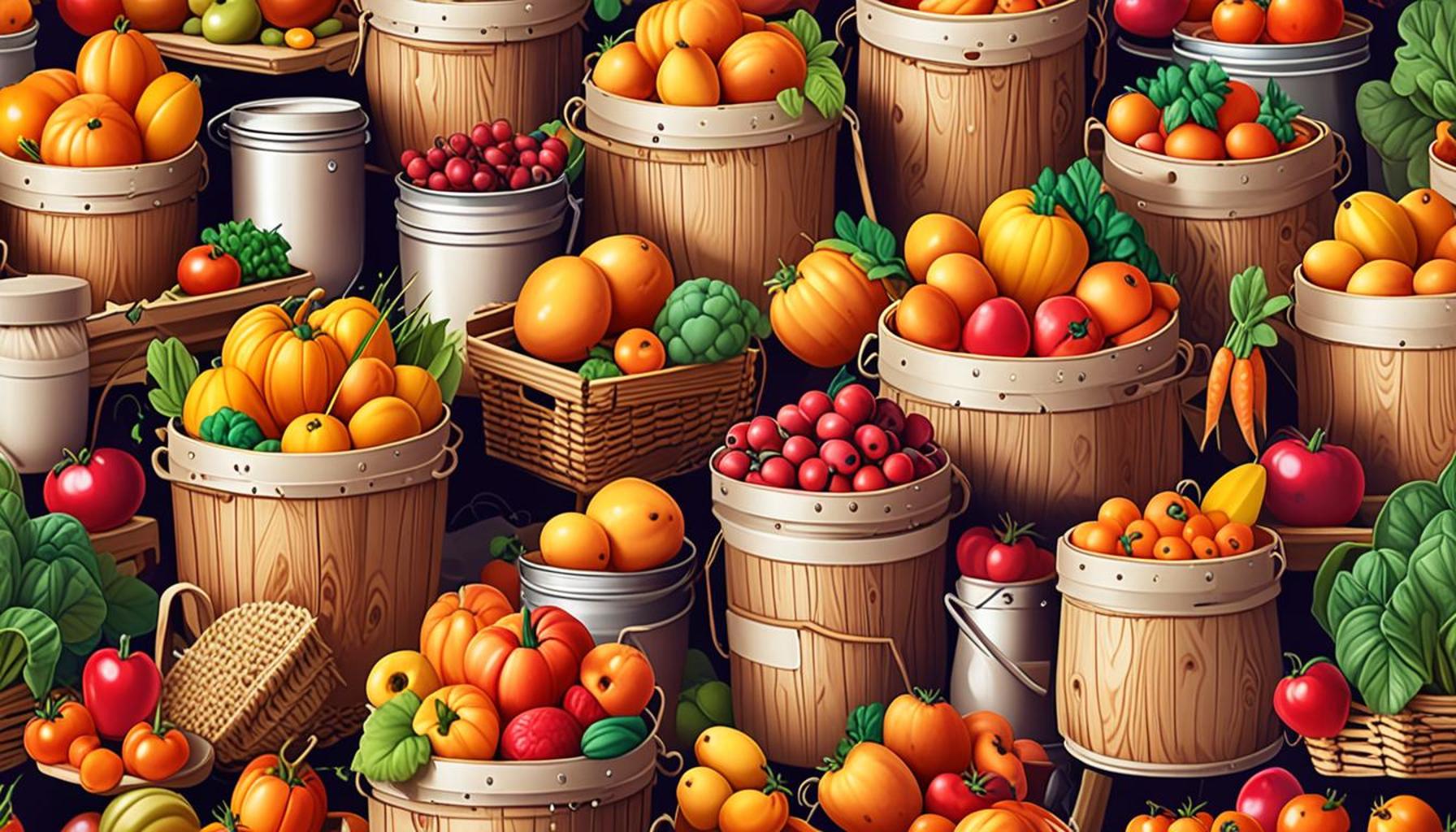Tips for Harvesting Leafy Vegetables Without Damaging the Plant

Understanding the Importance of Gentle Harvesting
Harvesting leafy vegetables can be a rewarding experience, but it comes with its challenges. Proper techniques are essential to ensure that the plants continue to thrive after you take your share. Utilizing the right methods can lead to healthier plants and an even more abundant future harvest.
Key Considerations for Successful Harvesting
To maintain the well-being of your leafy greens, keep these important aspects in mind:
- Timing: Harvest at the right time for peak flavor and nutrition. For instance, spinach is often best when harvested in the morning after dew has evaporated, while lettuce can be picked before the hottest part of the day to maximize crispness and flavor. Monitoring the growth stages helps ensure that you are not picking too early or too late.
- Technique: Use the appropriate tools and methods to avoid damaging delicate leaves. Consider using garden scissors or shears rather than pulling or yanking leaves from the plant. This minimizes stress on the plant and prevents tears, ensuring that the remaining foliage can continue to photosynthesize effectively.
- Frequency: Regular harvesting can encourage growth and improve plant health. For example, by consistently trimming the outer leaves of kale or Swiss chard, you can stimulate the plant to produce more new leaves, extending your harvesting season and promoting robust growth.
In this article, we will explore practical tips for harvesting leafy vegetables effectively. From understanding the growth stages to employing gentle harvesting techniques, you’ll find valuable insights to enhance your gardening skills. Whether you are growing kale, spinach, or Swiss chard, mastering these strategies will not only boost your experience but also contribute to the sustainability of your garden.
Gentle harvesting techniques are essential not just for the plant’s immediate health but also for ensuring that your future crops are abundant. For example, when dealing with mixed greens, take care to harvest only what you need and leave enough of the plant behind. This promotes a healthy growth environment while allowing for continued harvests over time.
Join us as we dive into the essential practices that will help you navigate the delicate process of harvesting without causing harm to your precious plants. Discover how careful attention can lead to a thriving garden filled with lush, healthy greens. Furthermore, by sharing these techniques with fellow gardening enthusiasts or community garden members, you contribute to a collective knowledge base aimed at fostering sustainable gardening practices across the United States.
DISCOVER MORE: Click here for helpful tips on identifying common pests
Essential Techniques for Harvesting Leafy Greens
To ensure that your harvest of leafy vegetables is both successful and sustainable, it’s crucial to engage in careful and strategic harvesting. By adopting specific techniques, you can minimize damage to the plants and promote their continued growth. Below are some effective methods to consider as you embark on this rewarding gardening task.
Use Sharp and Clean Tools
Having the right tools is fundamental in the harvesting process. Before you start harvesting, ensure your garden scissors or shears are sharp and meticulously cleaned. This is important because dull blades can crush the stems, leading to injury and increased vulnerability to pests and diseases. Additionally, sanitizing your tools can help prevent the transmission of any pathogens from one plant to another. A simple solution of water and mild bleach can effectively disinfect your tools before you begin.
Know Which Parts to Harvest
Different leafy vegetables have distinct harvest strategies. Understanding which parts of the plant to cut will not only help you avoid damaging it but also promote lasting yield. For example:
- Kale: Harvest by cutting the outer leaves at the base, leaving the inner leaves to continue growing. This method allows the plant to generate new leaves continuously.
- Lettuce: For loose-leaf varieties, simply snip the outer leaves at the base while leaving the plant intact. For head lettuces, consider cutting the head just above the soil line to encourage regrowth.
- Spinach: Similar to kale, pick the outer leaves first, allowing the center to keep growing robustly. This will result in a longer-lasting crop.
Recognizing the specific harvesting needs of each type of leafy vegetable can transform how many harvest cycles you achieve during the growing season, extending your enjoyment of fresh produce.
Practice Gentle Harvesting
When picking your leafy greens, it’s essential to adopt a gentle touch. Avoid yanking or pulling the leaves, which can cause trauma not only to the leaves but also to the plant’s stems and roots. Instead, use a technique known as pinching: grasp the base of the leaf or its stem with your fingers and cut just above this point. This approach ensures that you leave as much of the plant intact as possible, allowing it to continue flourishing.
Harvesting Conditions Matter
The time of day and weather conditions also play significant roles in the health of your harvested greens. Early morning, after a cool night, is typically the best time to harvest most leafy greens. During the cooler hours of the day, moisture levels are higher, resulting in crisp leaves that are full of flavor. Avoid harvesting during hot, sunny days since this can stress the plants, leading to wilting.
By utilizing these best practices and understanding the delicate nature of leafy vegetables, you ensure both a fruitful harvest now and the potential for healthier plants in the future. There is an art to harvesting that, when done correctly, not only sustains your garden but also enhances your overall culinary experience.
Essential Techniques for Gentle Harvesting
Harvesting leafy vegetables requires a delicate touch to maintain both the plant’s health and your garden’s productivity. Understanding the best methods can significantly enhance your gardening experience and yield. Here are some critical techniques:
| Harvesting Method | Key Benefits |
|---|---|
| Hand-Picking Leaves | Minimizes Damage: This method allows you to carefully select mature leaves while avoiding unnecessary harm to the plant. |
| Using Scissors or Garden Snips | Precision Cutting: Using tools ensures clean cuts, which helps in reducing stress and the risk of disease for the remaining plant. |
| Timing Your Harvest | Optimal Quality: Harvesting during cooler times of the day can lead to higher quality leaves and a longer shelf life. |
By implementing these techniques, you not only protect the plant’s integrity but also promote the continued growth of healthy leaves. This thoughtful approach results in a more bountiful harvest in future seasons, ensuring that your garden remains productive. Remember, the way you harvest can greatly influence the plant’s ability to thrive after picking.
DISCOVER MORE: Click here for harvesting techniques
Timing and Frequency of Harvesting
Beyond the techniques employed, understanding the timing and frequency of your harvest can significantly impact the health of your leafy vegetables. Different leafy greens have varying rates of growth, which can affect how often you should return for harvesting.
Harvest Regularly but Responsibly
Many leafy greens are at their best when harvested frequently and at the right moments. For instance, lettuce and arugula thrive on regular snipping. Regular harvesting stimulates new growth by preventing the plants from going to seed too early, a process known as bolting. This means you should aim to harvest leaves weekly or even bi-weekly, depending on your growth conditions and the specific variety you’re cultivating.
However, it’s essential to avoid over-harvesting in a single session. Ideally, you should take only one-third of the plant’s leaves at any given time. This principle allows the plant to maintain enough foliage to sustain photosynthesis and continue growing strong. Over-harvesting weakens the plant, reducing both the quality and quantity of future yields.
Watch for Signs of Maturity
The best time to harvest many leafy vegetables, such as Swiss chard and collards, is when they reach a size appropriate for your culinary needs. These veggies can be cut when they’re young and tender or left to mature longer for a richer flavor. A practical way to monitor this is to regularly inspect the plants and establish a harvesting routine based on their specific growth cycle. Every leafy green has its landmark signs of maturity. For example, spinach tends to be ready when its leaves are about six inches long, while kale can be harvested when it reaches around eight to ten inches.
Maintaining awareness of these maturity stages not only enhances the flavor of your dishes but also ensures a consistent supply of greens throughout the growing season.
Consider Companion Planting
Interestingly, the neighbors of your leafy greens can impact their growth and yield. Engaging in companion planting can benefit your leafy vegetables and streamline the harvesting process. For instance, planting radishes alongside your lettuce can help deter pests and provide shade for the greens, promoting healthier plants. As radishes are harvested much sooner than lettuce, this approach also makes room for your greens to thrive without overcrowding. The end result? A more productive garden space with minimal effort and damage to your plants.
Post-Harvest Care
After harvesting, don’t forget that the job isn’t over. The treatment your greens receive post-harvest ultimately affects their longevity. If possible, refrain from washing leafy greens immediately; excess moisture can cause problems during storage. Instead, wait until you are ready to use them or until you can store them properly in a cool, dry place. Using breathable bags like cloth can help maintain their freshness while preventing damage caused by trapped moisture and heat.
Additionally, consider ways to rejuvenate your plants after a harvest. Residual leaves should be fertilized minimally to prevent stress, and mulch can be applied around the plant base to retain moisture, helping ensure a strong, steady regrowth.
By mastering the delicate balance of proper harvesting techniques, timing, and follow-up care, you pave the way for a flourishing garden and a bountiful supply of nutritious leafy greens throughout the growing season.
DISCOVER MORE: Click here for essential tips on fruit storage
Conclusion
Successfully harvesting leafy vegetables is both an art and a science, requiring careful attention to detail and a keen understanding of the plants’ needs. By adopting effective methods such as employing proper cutting techniques, harvesting at the right time, and recognizing signs of maturity, you can ensure that each snip contributes positively to the overall health of your garden.
Moreover, the practice of companion planting not only enhances plant growth but also facilitates a smoother harvesting experience. By strategically pairing your leafy greens with other compatible plants, you enhance biodiversity and create a more resilient garden ecosystem. This fusion of practices encourages robust yields while maintaining the integrity of your leafy greens.
Post-harvest care is equally important; knowing how to store your greens correctly can prolong their freshness and nutritional value. Simple practices, such as minimizing moisture and utilizing breathable storage options, go a long way in retaining the quality of your harvest.
In summary, harvesting leafy vegetables without inflicting damage is a blend of timing, technique, and care. By embracing these practices, home gardeners not only secure a sustainable and delicious supply of greens year-round but also foster a deeper connection with their plants. As you refine your harvesting strategy, consider documenting your experiences and sharing insights with fellow gardening enthusiasts. This communal knowledge can lead to an even richer and more rewarding gardening journey.


